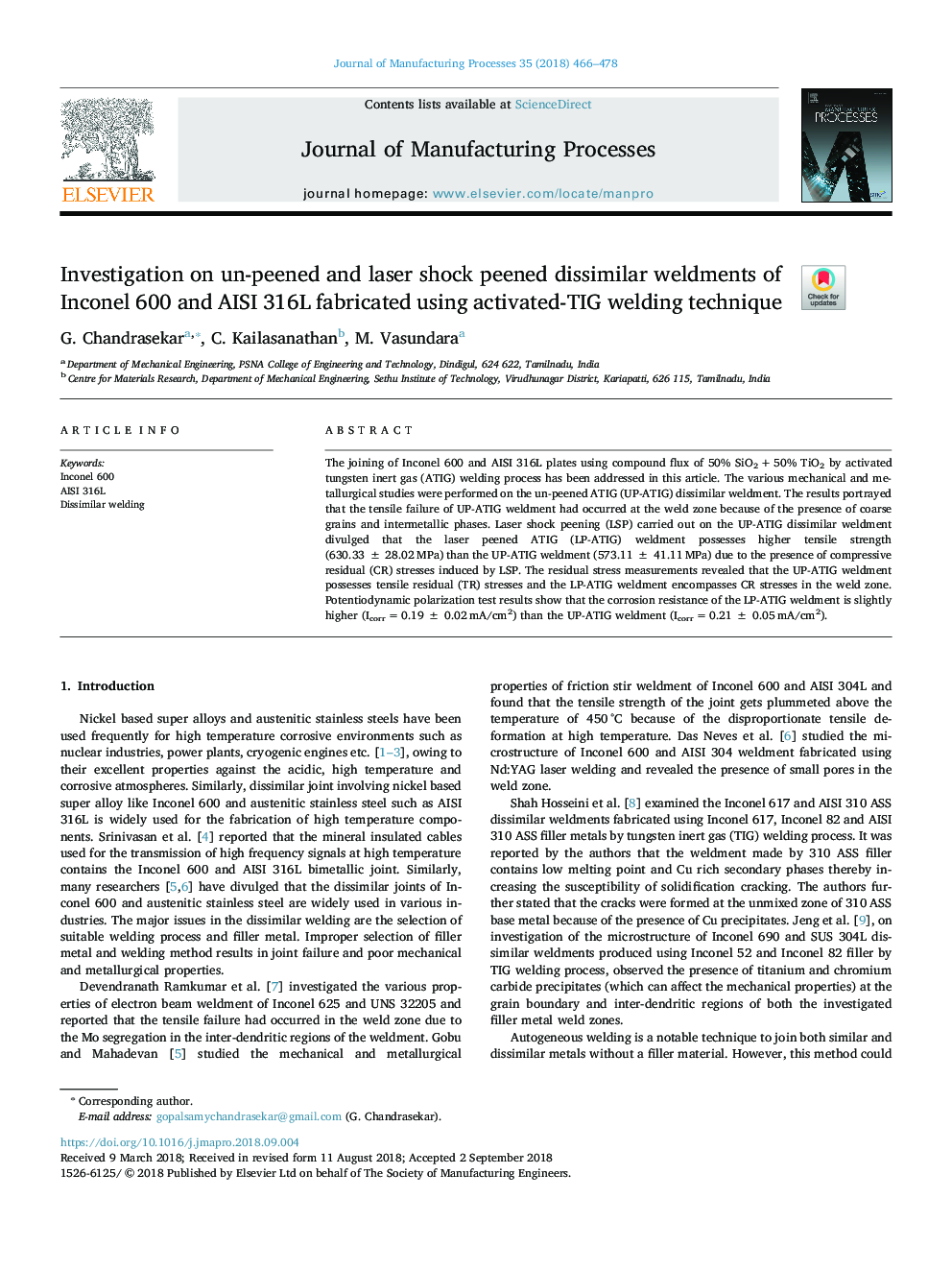| Article ID | Journal | Published Year | Pages | File Type |
|---|---|---|---|---|
| 11007170 | Journal of Manufacturing Processes | 2018 | 13 Pages |
Abstract
The joining of Inconel 600 and AISI 316L plates using compound flux of 50% SiO2â+â50% TiO2 by activated tungsten inert gas (ATIG) welding process has been addressed in this article. The various mechanical and metallurgical studies were performed on the un-peened ATIG (UP-ATIG) dissimilar weldment. The results portrayed that the tensile failure of UP-ATIG weldment had occurred at the weld zone because of the presence of coarse grains and intermetallic phases. Laser shock peening (LSP) carried out on the UP-ATIG dissimilar weldment divulged that the laser peened ATIG (LP-ATIG) weldment possesses higher tensile strength (630.33â±â28.02âMPa) than the UP-ATIG weldment (573.11â±â41.11âMPa) due to the presence of compressive residual (CR) stresses induced by LSP. The residual stress measurements revealed that the UP-ATIG weldment possesses tensile residual (TR) stresses and the LP-ATIG weldment encompasses CR stresses in the weld zone. Potentiodynamic polarization test results show that the corrosion resistance of the LP-ATIG weldment is slightly higher (Icorrâ=â0.19â±â0.02âmA/cm2) than the UP-ATIG weldment (Icorrâ=â0.21â±â0.05âmA/cm2).
Related Topics
Physical Sciences and Engineering
Engineering
Industrial and Manufacturing Engineering
Authors
G. Chandrasekar, C. Kailasanathan, M. Vasundara,
